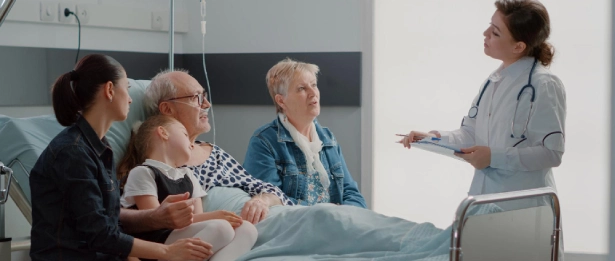Stroke Center

Last Update Date: 9/3/2024 11:15:42 AM
What is Stroke Center
A Stroke Center or Stroke Unit is a special unit established within a hospital or health institution to manage the rapid diagnosis, emergency response and treatment processes of stroke (paralysis) patients. A stroke is a condition in which the brain's blood flow is abruptly interrupted or which causes bleeding in the brain tissue. Stroke centers focus on minimizing possible permanent damage to the patient's health by quickly and effectively intervening this emergency illness.
Which Diseases Does the Stroke Center/Unit Treat
Stroke centers or units are usually units established to manage the diagnosis, treatment and rehabilitation processes of stroke (paralysis) patients. These centers are especially designed for the urgent evaluation of patients and the initiation of appropriate treatment.
Stroke centers usually focus on the following diseases and conditions:
Ischemic Stroke: Strokes caused by vascular occlusion. Such strokes usually occur due to clots or embolisms.
Hemorrhagic Stroke: Strokes caused by bleeding. Such strokes usually occur as a result of bursting or leaking blood vessels.
Transient Ischemic Attacks (TIA): Conditions that show short-term stroke-like symptoms, but are temporary. TIAs are generally considered to be warning signs before a stroke.
Rehabilitation After Stroke: It includes rehabilitation services such as physical therapy, speech therapy, occupational therapy after a stroke. This stage supports the process of returning patients to the activities of daily living.
Post-Stroke Care and Management: Long-term management of stroke patients, drug treatments, control of risk factors and management of chronic diseases.
Stroke Symptoms and Early Diagnosis: Educating the public about the symptoms of stroke, raising awareness in the community and various campaigns and educational programs aimed at early diagnosis.
Assessment and Control of Risk Factors: Identifying the factors that increase the risk of stroke and controlling these factors (for example, hypertension, diabetes, obesity).
Psychosocial Support After Stroke: Providing psychosocial support for the coping processes of patients and their families after stroke.
Liv Hospital Stroke Center
Emergency response service is provided 24/7 at BAVIM – Stroke Center and specialist physicians are on duty permanently. The center, which is located in the “Acute Treatment Unit” with beds and the “Rehabilitation and Research Unit”, can be reached 24/7 from the BAVIM – Stroke Center Consultation Line no 0850 220 44 15.
Life-saving and disability-eliminating treatments in the fight against stroke can be successfully performed under the roof of our modern center. The sooner the necessary treatments are implemented, the more positive the clinical outcome is, so the first and most important step of the treatment is the rapid transportation of stroke patients to the stroke centers under the roof of BAVIM.
A Holistic Approach To Stroke
Intravenous thrombolysis, endovascular thrombectomy, stenting treatments aimed at preventing stroke recurrence, a wide range of rehabilitation services from physiotherapy to speech and language therapy.

